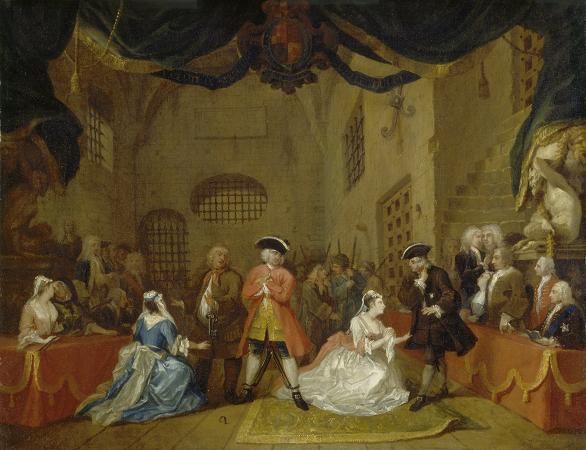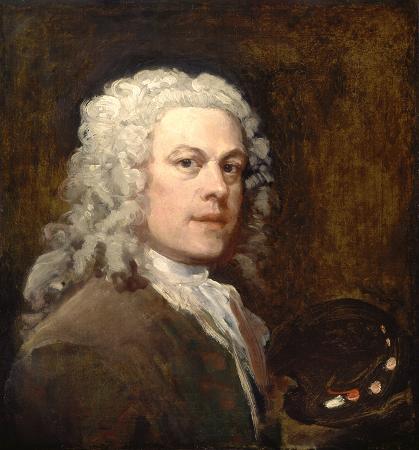Beggar's Opera (1729). Oil on canvas. 59 x 76. The Beggar's Opera is a ballad opera in three acts written by John Gay, with music arranged by Johann Christoph Pepusch. One of the earliest visual representations of The Beggar's Opera is a series of engravings by the English artist William Hogarth. Hogarth created a set of six engravings in 1729, depicting scenes from the opera. The engravings are notable for their detailed and realistic depiction of the characters and settings, as well as their use of satire and social commentary. In the 19th century, The Beggar's Opera became a popular subject for Romantic painters, who were drawn to its dramatic and theatrical qualities. One of the most famous paintings of this period is "The Beggar's Opera" by the French artist James Tissot. The painting shows a group of actors performing a scene from the opera, with the characters dressed in elaborate costumes and posed in dramatic attitudes. The painting is notable for its use of color and texture, as well as its depiction of the opera as a glamorous and exciting spectacle. In the 20th century, The Beggar's Opera was adapted for the stage and screen, and it has been represented in various ways in visual art. One notable example is the set and costume designs for the 1928 production of the opera at the Cambridge Theatre in London. The designs were created by the English artist Rex Whistler, and they are notable for their use of bold colors, whimsical motifs, and Art Deco-inspired patterns. Another notable example is the poster design for the 1953 film adaptation of The Beggar's Opera, directed by Peter Brook. The poster was created by the British graphic designer Tony Palladino, and it features a stylized image of a masked figure holding a dagger, surrounded by swirling lines and abstract shapes. The poster is notable for its use of bold graphics and dramatic contrast, as well as its evocation of the opera's themes of crime, deception, and betrayal. Ballad operas were satiric musical plays that used some of the conventions of opera, but without recitative. The lyrics of the airs in the piece are set to popular broadsheet ballads, opera arias, church hymns and folk tunes of the time. The Beggar's Opera premiered at the Lincoln's Inn Fields Theatre on 29 January 1728 and ran for 62 consecutive performances, the longest run in theatre history up to that time. The work became Gay's greatest success and has been played ever since. In 1920, The Beggar's Opera began an astonishing revival run of 1,463 performances at the Lyric Theatre in Hammersmith, London, which was one of the longest runs in history for any piece of musical theatre at that time. The piece satirised Italian opera, which had become popular in London. According to The New York Times: Gay wrote the work more as an anti-opera than an opera, one of its attractions to its 18th-century London public being its lampooning of the Italian opera style and the English public's fascination with it. Instead of the grand music and themes of opera, the work uses familiar tunes and characters that were ordinary people. Some of the songs were by opera composers like Handel, but only the most popular of these were used. The audience could hum along with the music and identify with the characters. The story satirised politics, poverty and injustice, focusing on the theme of corruption at all levels of society. Lavinia Fenton, the first Polly Peachum, became an overnight success. Her pictures were in great demand, verses were written to her and books published about her. After appearing in several comedies, and then in numerous repetitions of The Beggars Opera, she ran away with her married lover, Charles Powlett, 3rd Duke of Bolton. Bertolt Brecht and Kurt Weill adapted the opera into Die Dreigroschenoper in 1928, sticking close to the original plot and characters but with a new libretto and mostly new music. The original idea of the opera came from Jonathan Swift, who wrote to Alexander Pope on 30 August 1716 asking .what think you, of a Newgate pastoral among the thieves and whores there? Their friend, Gay, decided that it would be a satire rather than a pastoral opera. For his original production in 1728, Gay intended all the songs to be sung without any accompaniment, adding to the shocking and gritty atmosphere of his conception.
more...






